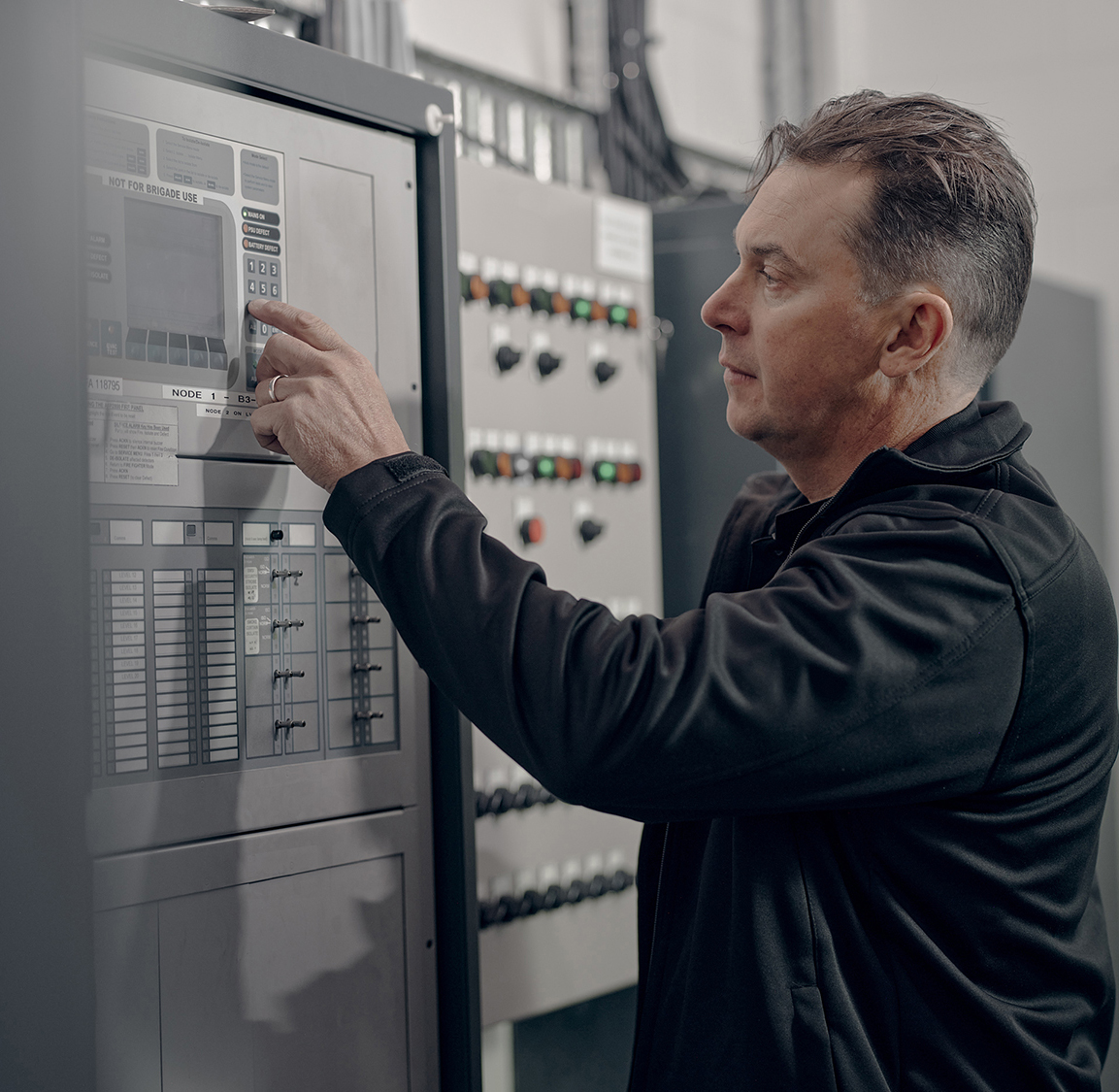
Full range of fire alarm systems to fit your needs
The NZ Building Code allows six different types of fire alarm systems but for users the chief distinction is between conventional systems and those that are analogue-addressable. While conventional systems are simple on/off switches, an analogue-addressable system has constant two-way communication between the control panel and each individual detector. At Argus, we supply a full range of systems to fit every type and size of installation.
-
Fire alarm systems
CONVENTIONAL ALERT SYSTEMS
Essentially a simple on/off switch connected to detectors, a conventional system provides essential detection and warning of fire but will only indicate the area or zone it is in. They’re affordable, and perfectly suited to smaller premises and straightforward applications.
ANALOGUE-ADDRESSABLE SYSTEMS
These provide specific details from individual detection locations and are capable of being networked with adjoining systems. Ideal for larger buildings, addressable systems also carry out routine testing of the detectors in a programmed sequence to determine their individual ‘health’. We are well versed in specifying and installing analogue-addressable systems, including integration into a total fire protection solution. -
Detection warning systems
Fire detection is right at the sharp end of protecting lives, property and livelihoods from fire. Detecting a fire early allows crucial time to evacuate people and initiate a response. So understanding the benefits and limitations of different detection systems, while fully understanding the operating environment, is all-important. We supply a full range of such systems and know how to exactly match them to differing needs.
MANUAL CALL POINT
Manual call points are used to initiate an alarm signal, and operate by means of a simple button press or when the glass is broken revealing a button. They can form part of a manual alarm system or an automatic alarm system. These are installed at all final exits from a building and on escape routes as required.
HEAT DETECTION SYSTEMS
The simplest form of detection, modern heat detectors are reliable and well-designed against false alarms. There are a few different types and configurations. Their limiting factor is speed: a fire can be well under way before it generates enough heat to trigger the nearest detector. Affordable and dependable, they suit certain applications well. Higher-spec pneumatic heat detection systems have specialised uses.
SMOKE DETECTION SYSTEMS
The two main types of smoke detector are photoelectric and ionisation, sometimes combined in a dual detector. They have the advantage of being quick to detect the presence of smoke and trigger an alarm, but are slightly more expensive than heat detectors. Like heat detectors, there are conventional switched systems and analogue addressable.
CO2 DETECTION SYSTEMS
Combustion produces high levels of CO2 and this can be detected by sensors. The ones used in fire detection are much more sensitive than in ‘high CO2’ detectors for homes. They are mostly used in specialised applications.
BEAM DETECTOR SYSTEMS
A beam detector senses smoke by projecting a light beam from a transceiver unit across the protected area to a reflector that returns the light signal to the transceiver unit. Smoke entering the beam path will decrease the light signal causing an alarm. Typically, beam detectors would be installed in large open-area buildings such as warehouses, shopping malls and similar spaces.
FLAME DETECTOR SYSTEMS
A flame detector is a type of sensor that can detect and respond to a flame’s presence. They are capable of identifying smokeless liquid and smoke that can create an open fire, however mostly flame detectors are there to detect heat, smoke, and fire. This device also detects fires from the air temperature and air movement. Flame detectors are usually optical devices, able to respond to flame in less than a second. Response to the detection of a flame can be aligned through its installation and how the system is set up. Typically, flame detectors would be installed in boiler furnaces, industrial warehouses, chemical factories and warehouses, and other high-risk combustion sites.
ASPIRATING DETECTOR SYSTEMS
An aspirating smoke detector (ASD) is a system used in active fire protection, consisting of a central detection unit which draws air through a network of pipes with strategically-placed sample holes. These pipes are connected to an Aspirating Fire and Smoke Detector which continuously samples the air pulled through the pipe system looking for very small smoke particles. The sensitivity can be adjusted depending on design. Typically, these systems are used in IT server rooms, high-level ceiling locations and in high fire-risk sites.
EVACUATION WARNING
Alerting people to a fire is an essential part of assuring their safety. We offer everything needed as part of an integrated fire protection system, including a variety of audible and visible alarms suited to different working environments and staff needs. Integrated via the main control panel interface, these can be configured to operate independently depending on the location and scale of the fire.